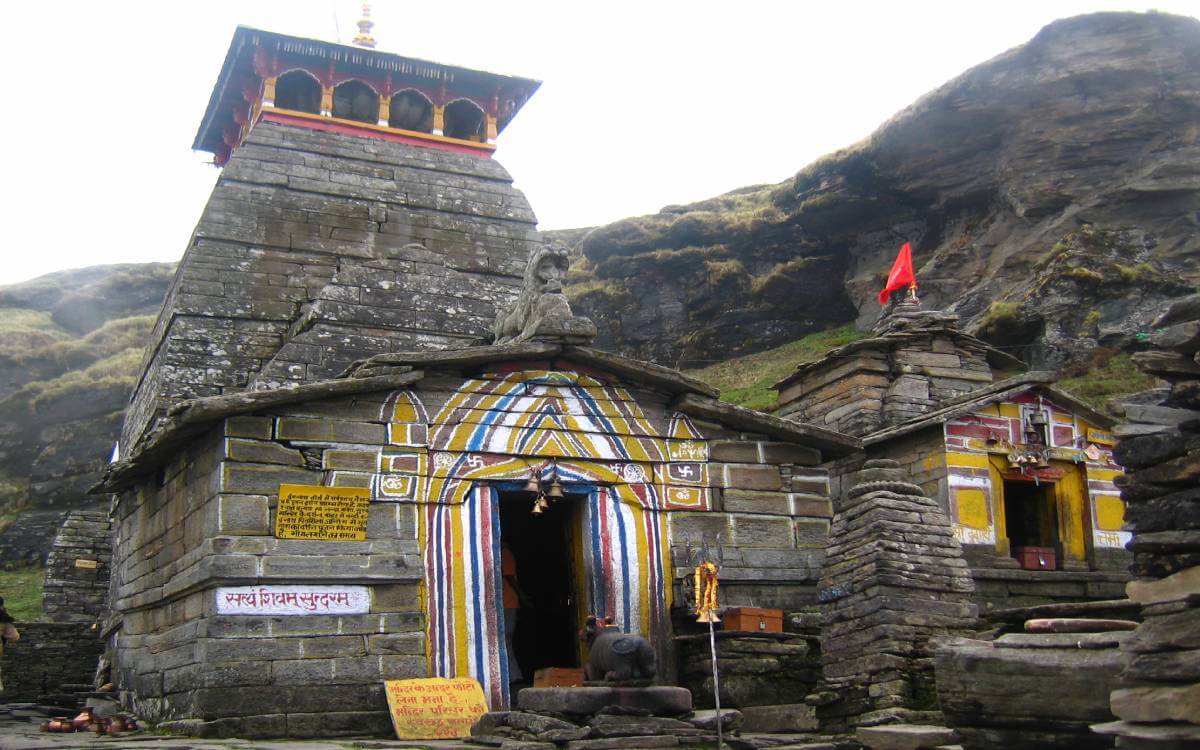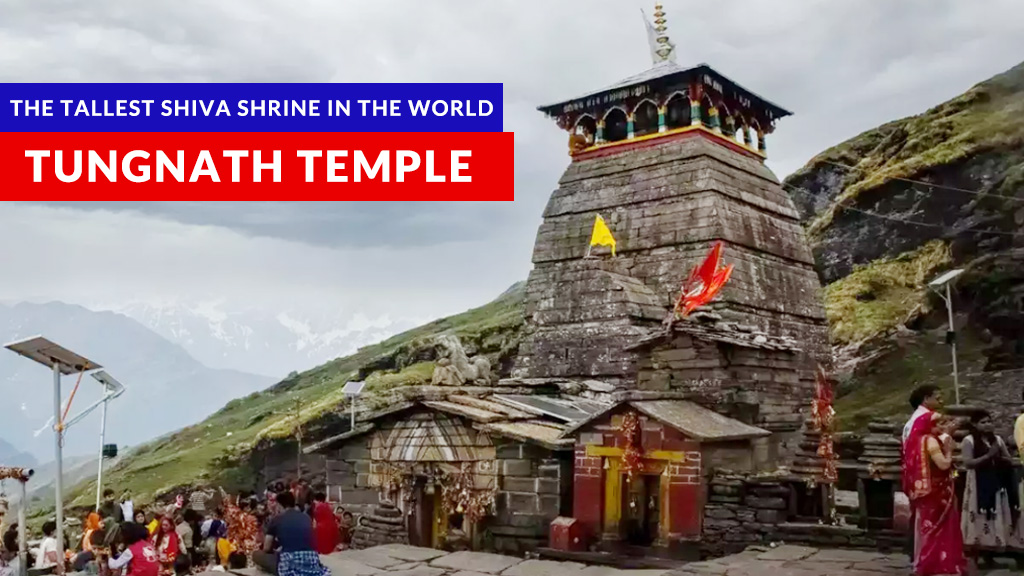Table of contents
Tungnath Temple is an ancient and revered Hindu pilgrimage site located in the Indian state of Uttarakhand. Situated in the Rudraprayag district, it is nestled in the lap of the majestic Himalayas at an elevation of 3,680 meters (12,073 feet) above sea level, making it the world’s highest Shiva Temple.
Considered one of the Panch Kedar temples, Tungnath is dedicated to Lord Shiva and holds great spiritual significance for devotees. The temple is a part of the famous Char Dham Yatra (pilgrimage) in Uttarakhand and attracts a large number of visitors every year.
The history of Tungnath Temple dates back thousands of years, with references found in ancient Hindu scriptures. According to mythology, it is believed to be the place where Lord Shiva’s arms appeared during the famous episode of the Mahabharata. The temple is associated with the Pandavas, the heroes of the Mahabharata epic, who are said to have meditated here to seek forgiveness from Lord Shiva after the Kurukshetra war.
The trek to Tungnath Temple is a significant part of the pilgrimage experience. The route begins from the picturesque town of Chopta and covers a distance of approximately 3.5 kilometers (2.2 miles). The trek offers stunning views of snow-capped peaks, lush meadows, and breathtaking landscapes. It is a moderate-level trek suitable for both seasoned trekkers and beginners.
Visiting Tungnath Temple provides a serene and spiritual experience. The temple’s architecture showcases intricate stone carvings and a unique blend of Garhwali and Kumaoni styles. Apart from the main deity of Lord Shiva, there are also idols of other deities within the temple complex.
The weather at Tungnath Temple varies with the seasons. Summers (April to June) offer pleasant temperatures, making it an ideal time for the trek. Monsoon season (July to September) brings moderate to heavy rainfall, making the trek challenging. Winter (October to March) brings heavy snowfall, transforming the area into a winter wonderland. Trekking during this time requires proper winter gear and expertise.
Once you reach Chopta, the trek to Tungnath Temple begins. The trek is approximately 3.5 kilometers (2.2 miles) long and takes around 3-4 hours to complete, depending on your pace. The trail is well-marked and offers scenic views of the Himalayas, meadows, and forests. It is advisable to carry essentials like water, snacks, comfortable trekking shoes, warm clothing (especially during winters), and any necessary medication.
During the trek, you will pass through picturesque locations such as Deoria Tal, Rohini Bugyal, and Chandra Shila. These places offer mesmerizing views and are worth exploring if you have additional time.
It is important to note that Tungnath Temple remains open for a limited period during the year, usually from April to November, due to heavy snowfall in the winter months. It is recommended to check the current opening dates and timings before planning your visit.
Remember to respect the surroundings, follow trekking guidelines, and carry out any waste you generate to preserve the natural beauty of the region.
Considered one of the Panch Kedar temples, Tungnath is dedicated to Lord Shiva and holds great spiritual significance for devotees. The temple is a part of the famous Char Dham Yatra (pilgrimage) in Uttarakhand and attracts a large number of visitors every year.
The history of Tungnath Temple dates back thousands of years, with references found in ancient Hindu scriptures. According to mythology, it is believed to be the place where Lord Shiva’s arms appeared during the famous episode of the Mahabharata. The temple is associated with the Pandavas, the heroes of the Mahabharata epic, who are said to have meditated here to seek forgiveness from Lord Shiva after the Kurukshetra war.

The trek to Tungnath Temple is a significant part of the pilgrimage experience. The route begins from the picturesque town of Chopta and covers a distance of approximately 3.5 kilometers (2.2 miles). The trek offers stunning views of snow-capped peaks, lush meadows, and breathtaking landscapes. It is a moderate-level trek suitable for both seasoned trekkers and beginners.
Visiting Tungnath Temple provides a serene and spiritual experience. The temple’s architecture showcases intricate stone carvings and a unique blend of Garhwali and Kumaoni styles. Apart from the main deity of Lord Shiva, there are also idols of other deities within the temple complex.
The weather at Tungnath Temple varies with the seasons. Summers (April to June) offer pleasant temperatures, making it an ideal time for the trek. Monsoon season (July to September) brings moderate to heavy rainfall, making the trek challenging. Winter (October to March) brings heavy snowfall, transforming the area into a winter wonderland. Trekking during this time requires proper winter gear and expertise.
How to reach
To reach Tungnath Temple, you can follow these steps:By Air
The nearest airport to Tungnath Temple is Jolly Grant Airport in Dehradun, Uttarakhand. From the airport, you can hire a taxi or take a bus to reach Chopta, which is the base point for the trek to Tungnath.By Train
The nearest railway station is Haridwar Railway Station, which is well-connected to major cities in India. From Haridwar, you have the option to either hire a taxi or board a bus in order to reach Chopta.By Road
Chopta is well-connected by road, and you can easily reach there by private car or bus. It is approximately 450 kilometers (280 miles) from Delhi and can be reached via Rishikesh, Devprayag, Srinagar, Rudraprayag, and Ukhimath.Once you reach Chopta, the trek to Tungnath Temple begins. The trek is approximately 3.5 kilometers (2.2 miles) long and takes around 3-4 hours to complete, depending on your pace. The trail is well-marked and offers scenic views of the Himalayas, meadows, and forests. It is advisable to carry essentials like water, snacks, comfortable trekking shoes, warm clothing (especially during winters), and any necessary medication.
During the trek, you will pass through picturesque locations such as Deoria Tal, Rohini Bugyal, and Chandra Shila. These places offer mesmerizing views and are worth exploring if you have additional time.
It is important to note that Tungnath Temple remains open for a limited period during the year, usually from April to November, due to heavy snowfall in the winter months. It is recommended to check the current opening dates and timings before planning your visit.
Remember to respect the surroundings, follow trekking guidelines, and carry out any waste you generate to preserve the natural beauty of the region.



